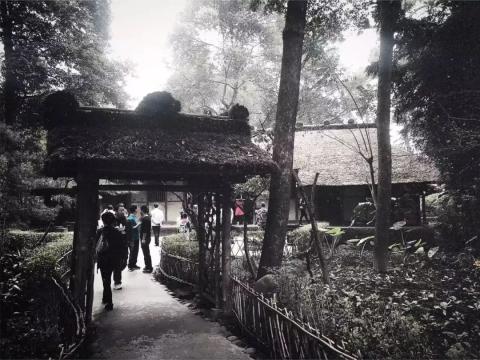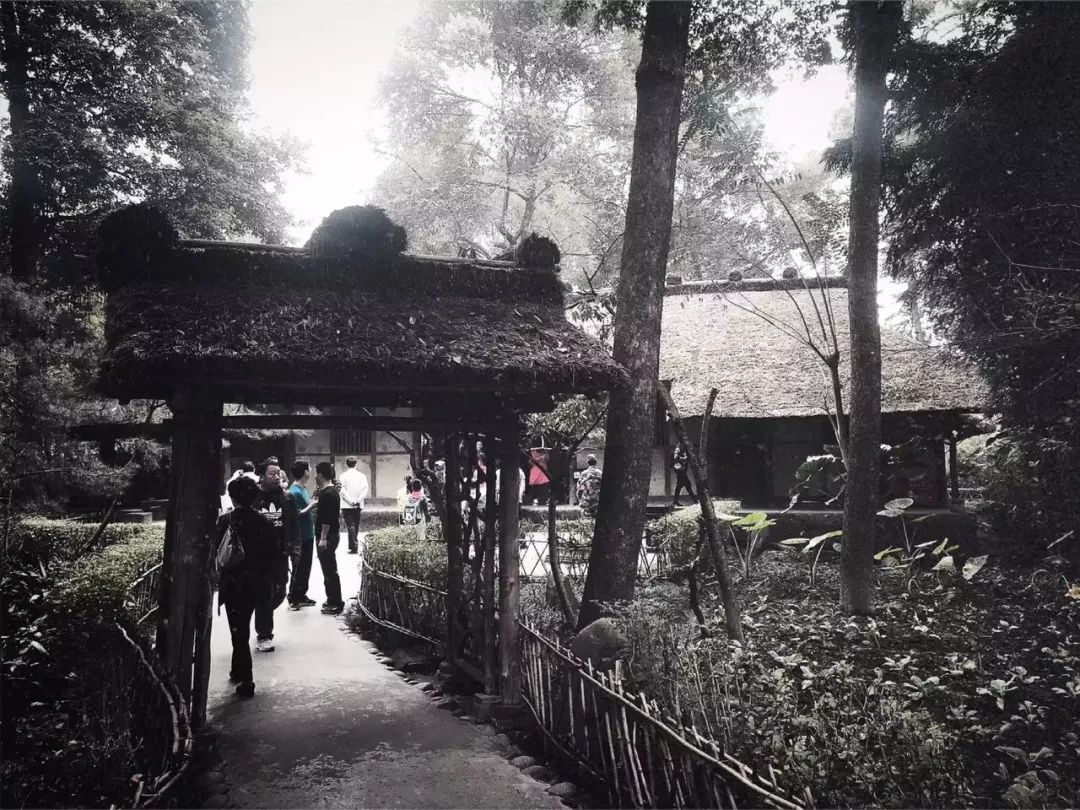
I didn’t want to write anything originally. What I’m worst at in my life is writing travel notes, although all kinds of travel notes are my favorite to read. When I was still in Daocheng Yading, a friend saw the photos I posted on WeChat Moments and suggested that I write down some strategies while my memory is still there for future reference. This really stumped me. First of all, when I travel by myself, I always only set a route and destination, and leave everything else to my own will. Secondly, strategies seem to be more difficult to write than travel notes. The travel notes can be romantic, literary, or fictional, but the guide must be realistic, accurate in description, and a bit like writing a paper. But if I don’t write a word, it seems I can’t bear the beautiful scenery of Daocheng and Yading, as well as the beauty on the road. The words written below are neither travel notes nor guides. I just write them wherever I think of them, just as casual notes.
The original plan was not to go to Daocheng and Aden, but to drive along the Sichuan-Tibet line. Last October, I had the opportunity to take a long-awaited trip to National Highway 318 with my friends. However, the factory had only been open for a few months. Considering the feelings of his partners, he voluntarily gave up and moved the plan to this year. At the shareholders' meeting at the end of last year, I proposed to quit the factory management. I was not agreed, but they reluctantly agreed to give me a half-month vacation to visit Sichuan and Tibet. In this way, it seems that grass has been planted in my heart, and it will start a prairie fire from time to time, harassing me and making me feel itchy. In August, I once again proposed to completely withdraw from management, and several other shareholders finally agreed unhappily, and the time was set after the opening of the self-operated store in Changsha. So, I waited patiently for the opening of the Changsha store. On October 18, the day when the Changsha store was scheduled to open, I arrived in Changsha and bought a ticket from Changsha to Chengdu on the 20th. However, the Sichuan-Tibet line failed again, and with regret, I joined a local outdoor club in Chengdu to participate in the trip to Daocheng and Aden. Later experiences proved that my regrets were completely unnecessary. The beauty of Daocheng Yading and the surprise it gave me made me completely forget about my original regrets.
Many people say that March 18th is a pilgrimage, and going to Tibet is just to purify your soul. In my opinion, this is complete nonsense. Not to mention that these people don’t know much about Buddhism, and they know nothing about Tibetan Buddhism. When you see the snow-capped mountains and lakes in Tibetan areas, the Tibetan people who worship devoutly, and the prayer flags swaying in the wind, do you feel that your soul has been purified? ! A worldly or dirty heart will never be clean wherever it is placed. As a superficial person, I like to choose to travel to Tibetan areas. I have no other intention, just to see those beautiful scenery. This was the case during the 2008 trip to Tibet, and it is still the case this time. Especially in the golden autumn of October, whether it is 318 or Daocheng Aden, it must be extremely beautiful.
D0: Let’s write a few words about Chengdu
I came early and I have one day to “travel freely” in Chengdu.
Chengdu, coming and going, has never seen its true colors. If someone asks me if I have been to Chengdu? You can answer yes because your body has been there before. You can also answer that I haven't been, because I have never looked at her seriously with my eyes. My best memory of Chengdu is the rabbit heads sold at the airport. They looked very delicious and tempting, but I have never tasted them. I always think that there will be a next time, and I will definitely take a few rabbit heads back to Guangzhou to enjoy them.
On this day, I finally had the opportunity to wander around in this city, which is said to be the happiest city in China.
I checked the map and found that the places I wanted to visit were not too far from the hotel I was staying in. I gave up taking a taxi and walked + took the bus. I visited three places in one day: Du Fu Thatched Cottage, Jinli and Wuhou Temple, and Kuanzhai Alley. Going to Du Fu Thatched Cottage is almost a walk. I like walking in the quiet alleys, it always gives me a sense of comfort. A thatched cottage is expanded into a park for a fee of 60 yuan. I thought it would be a quiet place. After entering the thatched cottage, I first met a group of primary school students. It was probably an extracurricular activity organized by the school. They recited various Tang poems loudly along the way, making it very noisy. Then I met a group of foreign friends, moving slowly under the explanation of the tour guide Na Chinglish. I always hate crowds, so I hid in a remote part of the park soon after I entered, and smoked a cigarette leisurely. I waited until the group of students had gone far away, and there were no more international friends in sight, then I returned to the thatched cottage. Where, slowly wandering around.
Let’s not talk about the scenery in the thatched cottage. It is similar to city parks across the country, with pavilions, pavilions, and fallen leaves. The only difference is that there is an additional thatched cottage—a typical folk house in Western Sichuan. It is impossible for a house from the Tang Dynasty to survive to this day, and I don’t know when this old house was rebuilt. When I thought of this, I lost all interest and just glanced inside. I think Du Fu is a tragic poet. According to the Enneagram, he should be considered a Type 4 personality, or a Type 1 personality. But I guess his core number should be No. 1, such as his concern for the country and the people. When facing pressure, they will have some characteristics of Number Four, such as tragic romance. I memorized some of his poems in high school, but I still remember only one or two sentences. The one that impressed me the most was the song "The Thatched Cottage Broken by the Autumn Wind": There are tens of millions of mansions, and the great shelter is for all the poor people in the world. Happy face.

It only takes a short time to take a direct minibus from the Cottage to Wuhou Temple. Next to it is Jinli. Let's go shopping first and have some snacks, which is barely enough for lunch. The flow of people in Jinli reminded me of the scenic spots during the National Day holiday. Almost as soon as I walked in, I felt bored. On both sides of the narrow streets, there are shops selling various snacks and souvenirs. Those seemingly ancient buildings did not attract my interest. With the idea of visiting here, I quickly walked through this short street, as if I had completed a task that I was reluctant to do but had to do, and I felt relieved for a while. Find a small door next to it, hand over a 60 yuan ticket, and enter the Wuhou Temple.

Wuhou Temple was built to commemorate Zhuge Liang. It actually enshrines Liu, Guan, and Zhang, as well as 14 civilian officials headed by Pang Tong and 14 military attachés headed by Zhao Yun. There are a few things here that are quite interesting. First, Liu Bei's tomb is located in the Wuhou Temple. The tomb is not large in size, about four acres of land, but it is lush and green. Historical data categorically states that the person buried inside is Liu Bei, but God knows whether it is true or not. Second, the statue of Zhao Yun is dressed in civil official uniform rather than military military uniform. This is probably because this statue only existed in the Qing Dynasty, and during the Ming and Qing Dynasties, all civil servants were civil servants and military servants. This should be done to highlight Zhao Zilong's versatility in civil and military affairs and his abilities beyond civil and military affairs. supreme status. The third is the plaque hung in the middle of the Sanyi Temple in memory of Liu Guanzhang. It has the four characters "Holy Tongzhen" written on it. It was actually inscribed by a local shoemaker. Because Liu Bei was born as a shoemaker, he was regarded as the ancestor of shoemakers. Although Liu Bei had already died at the time of the inscription, later generations still had such magnanimity and allowed this plaque to hang high, which is still admirable.

After coming out of Wuhou Temple, we got on the bus and headed towards Kuanzhai Alley.
In the fifty-seventh year of Kangxi (1718), the Junggar tribe invaded Tibet. After the Qing court sent 3,000 officers and soldiers to quell the rebellion, it selected more than 1,000 soldiers to stay in Chengdu forever and built the city full of them - Shaocheng. The regulations of the Qing Dynasty were strict, and no Manchu and Mongolian officers and soldiers were allowed to leave Shaocheng without permission to get involved in business transactions. He relied on the spring and autumn martial arts competitions held in Shaocheng Park every year, and received royal rations based on outstanding performance. The wind and rain are falling, and now there are only two alleys, wide and narrow, left in Shaocheng!
The Kuanzhai Alley area is composed of three parallel old-fashioned streets and courtyard groups: Kuan Alley, Narrow Alley and Jing Alley. It is the last remnant of the "Thousand-year-old Young City" urban pattern and century-old authentic architectural pattern of old Chengdu. It is also The northern hutong culture and architectural style are the "unique copy" in the south.

When we come here, the crowds are much less than in Jinli, and there are many places for people to rest along the alley. Although the business atmosphere is still very strong, in comparison, I seem to like it here better. The three alleys are not very long. I walked through the wide alley and the narrow alley with great interest. I also did not forget to step on the alley to show that I was here.

After walking the three alleys, I was very tired. I originally planned to go to the nearby Wenshu Monastery, but I gave up and hurried back to the hotel.
